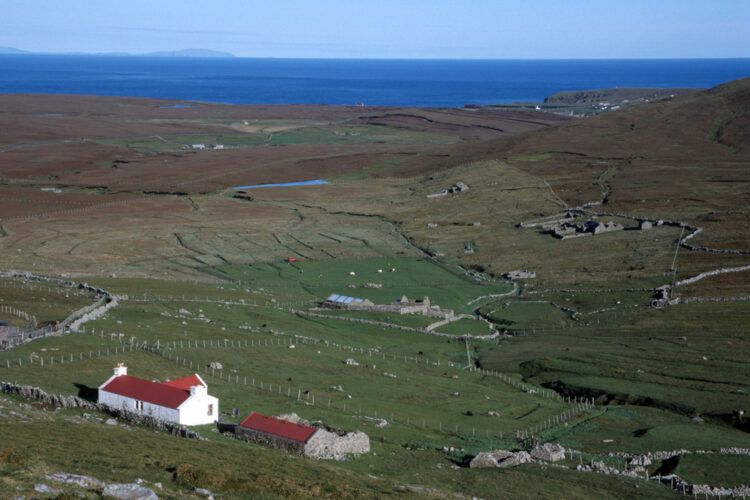Foula is one of the most remote inhabited islands in the UK, situated 20 miles west of the Shetland Islands in Scotland. Its isolated location, amidst rugged seas and dramatic cliffs, paints a beautiful yet challenging picture of life removed from pace and place. Foula’s history is as fascinating as its geographical features. The island’s name is thought to derive from the Old Norse “Fuglaey,” meaning “bird island.” Its abundant seabird populations and Norse heritage lend credence to the theory. The Norse influence permeates the island as it remained under Norwegian sovereignty until the 15th century, leaving a lasting mark on its culture and language.
Throughout history, Foula’s isolation has shaped a unique way of life. Its inhabitants have faced the elements with fortitude, carving a life out of the rugged landscape. Archaeological evidence suggests that people have inhabited Foula for thousands of years, drawn by its relative fertility and the bounty of the sea. Over the centuries, the island’s population has fluctuated, influenced by waves of emigration and the broader economic pulls of mainland Britain.
Today, Foula’s small community primarily engages in sheep farming and crofting. Sheep farming on Foula is renowned for producing high-quality wool, with the island’s native breed, the Foula sheep, adapted to thrive in its harsh climate. Crofting, a traditional form of land tenure and small-scale food production unique to the Scottish Highlands and Islands, ensures the community’s self-sufficiency. These practices they are ways of preserves Foula’s heritage and fosters a strong connection with the land.
Tourism also contributes to the island’s economy, albeit on a limited scale due to the island’s remote location. Visitors are drawn to Foula’s dramatic landscapes, including towering cliffs among the highest in the UK, offering nesting sites for seabirds like puffins and skuas. Birdwatching enthusiasts can witness the untamed nature in relative solitude on Foula.
Culturally, Foula’s Norse roots remain evident, not just in place names but also in local dialect and customs. The islanders value self-reliance, resourcefulness, and hospitality, traits essential in facing the challenges posed by their environment. Education and health care, while limited compared to the mainland, are supported by regular community efforts and a sense of collective responsibility. The island’s school, serving as an educational institution and a community hub, underscores the islanders’ commitment to preserving their unique way of life.
Foula’s remoteness crafts an existence markedly different from the rest of the UK. The absence of a regular ferry service compounds the island’s isolation, often requiring residents and visitors alike to rely on infrequent flights or private boats for connections to the outside world. Foula’s residents adapt by optimizing the island’s resources, minimizing external dependencies. While much of the UK experiences rapid technological advances and shifting societal norms, Foula maintains a slower, more deliberate pace of life.
The best time to visit Foula is during the summer months, particularly in June and July, when the weather is most stable, the days are long, and wildflowers are in full bloom. Be prepared for potential weather disruptions and always check ferry schedules as access can be challenging due to rough seas.

